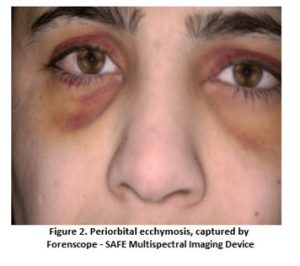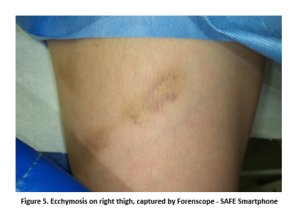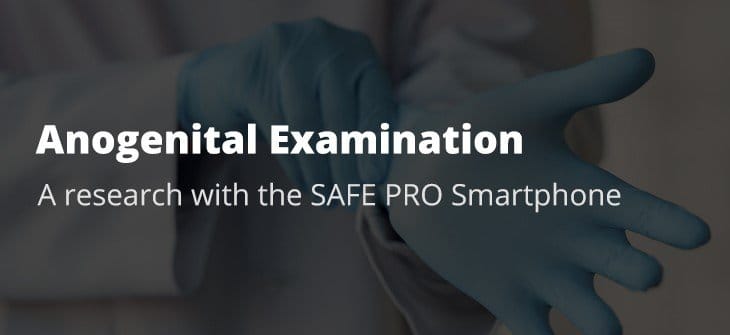Sexual violence is defined as any act of sexual content perpetrated against a person who does not consent or whose consent is not valid; this act may have been completed or remain in the initiative phase. Penile penetration of the vulva, anus, or oral region; oral contact with the penis, vulva, or anus; anal or vaginal penetration of a hand, finger, or object; intentional contact with the genitalia, anus, groin, breasts, inner thighs, or buttocks, directly or through clothing; any form of sexual content, including covert watching or viewing; and sexual harassment that does not involve verbal or behavioral contact are also considered sexual violence.
In order for a behavior to be defined as sexual violence, it must contain sexual content, the targeted person must not consent to this behavior, or the consent is not valid for reasons such as young age, mental illness, or mental retardation, and it must violate the individual’s bodily immunity or privacy.
Although it differs from society to society and from region to region, risk factors for sexual assault include factors like female gender, youth, history of sexual assault, economic inadequacy, alcohol and drug use, having multiple sexual partners, working in sex work and related jobs, war and migration environments, and broken family structure.
The assessment of sexual crime victims must be done in sexual assault clinics with forensic medicine experts, lab equipment, and interdisciplinary collaboration.
Evaluation stages of sexual assault cases include;
• Checking vital signs for potential first aid need and vital risks
• Informed consent
• Medical history-taking
• Physical examination
• Ano-genital examination
• Evaluation with photo documentation, Multispectral Imaging devices, and Colposcopy
• Sampling and laboratory investigations
• Consultations
• Psychological assessment and support,
• Pregnancy assessment and prevention
• Evaluation, treatment, and prevention of sexually transmitted infections
• Forensic medical evaluation and forensic reporting
• Social support, rehabilitation, and protection measures
In situations of acute sexual assault that are reported to medical facilities, traumatic lesions of various severity can be seen. Protecting bodily secretions on the victim, such as hair, fabric fiber, blood clots, semen, saliva, and other bodily fluids, during medical procedures for these lesions is crucial.
In cases of sexual assault, the health professionals should introduce themselves, explain the processes to be followed in a manner that takes into account the victim’s sociocultural background, inform them, and acquire their consent before beginning the history-taking and physical examination stages.
The steps of the evaluation and reasons behind them should be fully explained during the informed consent stage, and it should be confirmed that the victim understands what was said.
All phases, including genital examination, photography, imaging using imaging devices, sampling, and examination, must be covered by written informed consent.
In cases of sexual assault, history-taking should start by taking a medical history first and then focus on the forensic medical details of the sexual assault. In the medical history, information should be obtained about age, gender, height, weight, history, family history, previous or current diseases, accidents and surgeries, drugs used, alcohol, smoking, and drug habits, gynecological and obstetric history, menstrual cycle, date of the last menstrual period, and sexually transmitted diseases.
In a sexual assault case, the following details should be gathered:
- When, when, and how the incident occurred
- Use of force or weapons,
- The circumstances of the attack, such as restraints or threats made against the victim ,
- Whether or not there was vaginal, anal, or oral penetration with the penis, finger, or object
- Whether or not there was non-genital kissing, hand choking, biting, sucking, or licking.
- Whether ejaculation has occurred, and if so, whether it has transmitted to the body, clothing, or other areas,
- Whether or not a condom was used, if it was used, what the assailant did with the condom,
- Whether saliva or lubricating gel is used,
- Recent sexual activity before or after the attack (to be used in the differential diagnosis in terms of sperm analysis, DNA analysis, and microtraumas),
- Defecation, vaginal lavage, tooth brushing, use of tampons or pads, or showering after the attack
- Whether the victim or aggressor were under the influence of alcohol or drugs during the attack,
- What was done to the clothes and underwear found during the attack
- Whether the victim had impaired consciousness or memory loss when the incident took place
- Trauma areas, focusing specifically on the victim’s mouth, chest, vagina, and rectum
- Whether the attacker or the victim had any bleeding,
- The number of attackers, their physical traits, age, and level of involvement in the attack
In order to conduct a sexual assault examination, the following basic tools and materials must be used; light source, camera, disposable gloves, speculum, Forenscope – SAFE Multispectral Imaging device, lidocaine gel, lubricating medical gel or petroleum jelly, toluidine blue, sterile swaps, combs, nail clippers, injectors, needles, EDTA tube, biochemistry tube, distillate and water-sealed microscope, small distillate fluoride and a microscope, a microscope with sodium fluoride candle, spirit stove, paper envelopes, paper evidence bags, and labels.






The Forenscope – SAFE Multispectral Imaging device, which enables imaging with more advanced multispectral photography, a multispectral video imaging feature, wide-range light wavelengths, and filtering, has replaced with older methods used in sexual assault examination that relied on a light source and a standard camera.
The primary goals of physical examination are to detect, record, document, treat, and rehabilitate injuries and other potential medical issues. An external examination is advised prior to the anogenital examination. The scalp, face, ears, nails, fingers, hands, arms, axillary region, neck, shoulders, breasts, abdomen, and especially the inner surfaces of the thighs, hips, and legs should be examined for all traumatic lesions such as tenderness, swelling, ligament scars, fingerprints, bite marks, abrasion, ecchymosis, laceration, and incision during the external examination. Body diagrams should be used to record detected lesions, and each lesion should be photographed using scales and color scales.The oral cavity should be routinely examined for symptoms of forced oral penetration such as ecchymosis, petechial hemorrhage in the hard or soft palate, and/or frenulum tear.
ForenScope’s SAFE, SAFE Pro and SAFE System devices have a high-level technology that can be used in sexual assault examinations, enabling physicians to find evidence that may be overlooked.
Multispectral photo and multispectral video imaging capabilities allow imaging with White Light Group, White Polarised Light Group, Blue Light Group and Green Light Group lights and filters. Thus, thanks to its polarized imaging feature, it provides detailed imaging of biological fluids such as semen, urine, blood, and saliva that can be found both on clothing and on the body, and traumatic wounds such as scars, bruise marks and tooth marks.
Thanks to its easy use, regular inspection can be done, and the findings obtained from the victim can be followed up. At the same time, all the photos and videos taken by the physicians using ForenScope Case Management are saved as data in the private album of each victim, and it also allows taking notes and photo reports about the victims. Findings reports taken with ForenScope SAFE (Sexual Assault Forensic Examination), ForenScope SAFE Pro and ForenScope SAFE System can play an effective role in the judge’s decision making process in the right way in the conclusion of the investigation. In order for the captured photos and videos to be valid in the international system, SAFE System and SAFE Pro devices can also save images in RAW image and RAW video format. These images can also be exported in JPEG format.
ForenScope is a world leading brand with an unparalleled technology in the forensic imaging field. Thanks to the devices it has developed by considering every case in forensic science in detail, it provides you with speed and convenience in viewing all kinds of evidence, even the ones invisible to the eye.



